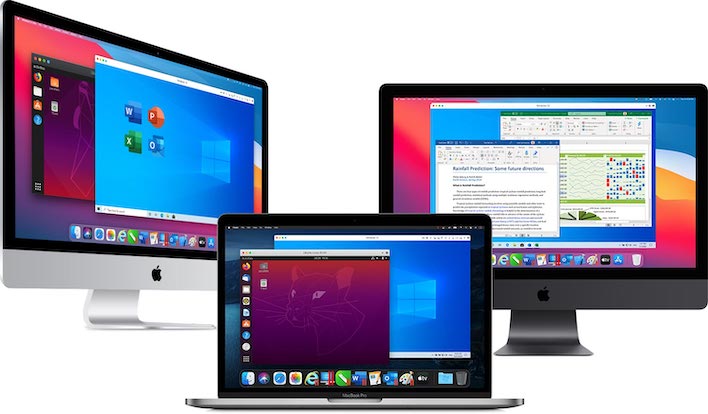Windows 10 On Arm Now Runs On Apple Silicon M1 Macs With Parallels Desktop 16.5

After a lengthy technical preview, Parallels has officially released Parallels Desktop version 16.5 which includes official support for Apple's latest Macs. That includes support for the 2020 Mac mini, MacBook Air, and MacBook Pro which all bear the Apple Silicon M1 processor. Supported guests include Windows 10's Insider Preview for Arm 64 and multiple Linux distributions.
During the preview period, we discovered that the Arm version of Windows ran pretty well, even when the guest OS is limited to just 4 GB of RAM and four CPU of the M1's eight CPU cores. Not only did the four-core VM outrun a Snapdragon 8cx in single- and multi-threaded Geekbench, it also more than doubled up performance in Speedometer when using the native version of Edge. At the time, however, the system wasn't very usable without video drivers. We can confirm that's been corrected in later technical previews, and the desktop and browser are both very smooth in today's release.
Parallels has also improved the guest setup process in version 16.5. For those who just want to use a Linux guest, the installation wizard includes direct download buttons for Ubuntu, Debian, Fedora, and Kali Linux. Installing Windows 10 for Arm still relies on the Windows Insider preview, but the installer will detect the VHDX file downloaded from Microsoft, which still speeds up the process quite a bit. The company has produced a three-minute YouTube video that outlines the process.
Parallels press release has made some big claims about Windows and Linux performance in the latest version of the VM software. The most nonsensical claim is that Parallels uses 250% less energy when running on Apple Silicon. For that to be true, the Mac would actually have to generate electricity to send back to the grid. More likely, Parallels meant to say that the Intel Mac uses 250% more energy, which would mean the M1 Mac uses around 30% of the energy of the older system.
Other performance claims include the M1 Mac delivering 60% faster DirectX 11 3D performance compared to a MacBook Pro with a Radeon Pro 555X. That's a pretty bold claim in and of itself. With x86-64 emulation in later Windows Insider previews, gaming on Windows with an M1 Mac with sufficient memory to dedicate ample RAM to a guest could be possible, at least on Arm-native games. Apple has an event scheduled for next week where we might see more powerful Apple Silicon make its debut as well.
Interested users with M1 Macs can hit up the Parallels website to download a trial of Desktop and give it a spin. The trial has a 14-day period, after which a full license can be acquired for $79.99 for a perpetual license to version 16 for home and student users. A $99.99 annual subscription is available for pro and business users.

